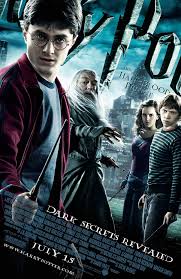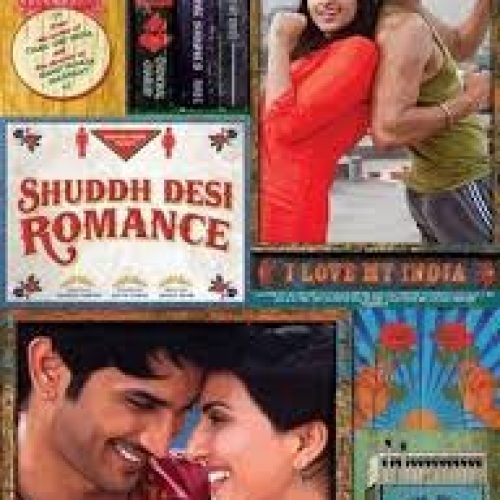A sense of impending doom hangs over every scene in this darker, more introspective entry of the Harry Potter saga. Harry Potter and the Half-Blood Prince (2009) stars Daniel Radcliffe, Rupert Grint, and Emma Watson, with notable performances from Michael Gambon and Tom Felton. Directed by David Yates, the film is set primarily at Hogwarts during Harry’s sixth year, as the shadow of Voldemort looms larger than ever. The genre is a mix of fantasy, drama, and mystery, with a heavy dose of character-driven storytelling that delves into the darker recesses of both magic and the human heart.
The plot centers around Harry’s discovery of a mysterious Potions textbook once owned by the enigmatic “Half-Blood Prince.” As he becomes increasingly reliant on the annotations within the book, Harry also finds himself embroiled in Dumbledore’s mission to learn more about Voldemort’s past. The stakes are higher than ever as Dumbledore and Harry explore Voldemort’s early life and uncover crucial secrets about how he became one of the most dangerous dark wizards. Meanwhile, Draco Malfoy is given a deadly mission, and his transformation throughout the film adds layers of tension as he teeters on the edge of completing his task. All the while, the teenage characters struggle with more mundane but equally relatable challenges—romantic entanglements, friendships, and the growing tension of impending war.
One of the most impressive elements of the film is its nuanced exploration of Draco’s character. Played by Tom, Draco’s arc in this film takes him from being the usual snide schoolyard bully to a deeply conflicted, almost tragic figure. Tom excels at portraying Draco’s inner turmoil, showing how the weight of his family’s expectations and Voldemort’s threat break down his once arrogant exterior. His scenes in the Room of Requirement, where he practices his mission and wrestles with fear and indecision, are some of the most powerful in the film. By giving Draco a more substantial role, the film shifts focus to the complexity of its villains, showing that even those who seem irredeemable are often victims of circumstance and fear.
The direction by David Yates deserves particular praise for the film’s tone. Yates crafts a brooding, atmospheric mood that mirrors the growing darkness in the wizarding world. His decision to balance the increasingly bleak themes of betrayal and sacrifice with moments of levity—like the romantic subplots—makes the film more dynamic and emotionally engaging. The way Yates handles the quieter, character-driven moments is especially effective. Scenes between Harry and Dumbledore, as they discuss Voldemort’s past, are laden with tension and foreshadowing. Yates uses silence and pauses effectively, letting the weight of what’s unspoken hang in the air. His direction allows the characters to breathe and develop while still maintaining a sense of urgency throughout the narrative.
Cinematographer Bruno Delbonnel transforms Hogwarts into a somber, almost Gothic backdrop in this film. His use of muted color tones, particularly blues, grays, and greens, adds to the pervasive sense of foreboding. The lighting in this film is perhaps the most visually striking in the series, with a heavy reliance on shadows and dimly lit environments. One standout scene visually is the Pensieve sequences, where Harry and Dumbledore delve into Voldemort’s memories. The way these memories are shot, with a dreamlike haze and soft-focus, creates a sense of eerie nostalgia, making them both fascinating and unsettling. The final scenes, set in a cave where Harry and Dumbledore face one of Voldemort’s horcruxes, is another visually stunning moment, combining CGI and practical effects to create an atmosphere of dread and danger.
Musically, Nicholas Hooper continues to provide a fitting score that complements the tone of the film. His compositions are more subdued compared to earlier entries in the series, reflecting the darker and more introspective nature of the plot. The score is less about grand magical flourishes and more about accentuating the tension between characters and highlighting the emotional depth of pivotal moments. For example, the music during the discovery of the Horcrux is haunting and minimalist, allowing the weight of the moment to speak for itself without overwhelming it. While John Williams’ more whimsical scores are missed in the lighter moments, Hooper’s music perfectly underscores the serious tone of this installment.
The special effects in the film are a blend of practical magic and CGI, but it’s the restraint in their use that makes them stand out. Rather than relying on constant displays of magical spectacle, Yates and his team focus on making the magic feel more intimate and, at times, sinister. The use of special effects in the cave sequence is an excellent example—rather than a barrage of spells, the magic feels otherworldly and dangerous, with the water and fire taking on a life of their own. It’s in this careful, deliberate use of effects that the film’s atmosphere is reinforced. The visual effects for the enchanted objects, the dark mark, and the various magical spells and potions are seamlessly integrated, never overwhelming the story but always enhancing it.
One of the film’s more understated but crucial elements is its exploration of themes like loss and responsibility. Harry, now more aware than ever of what lies ahead, grapples with the weight of being the “chosen one.” This film takes its time to explore the emotional toll this responsibility has on him, especially in his interactions with Dumbledore. Dumbledore himself becomes a more vulnerable figure in this movie, showing signs of weariness as he carries the burden of guiding Harry. Michael Gambon’s portrayal of Dumbledore is both commanding and fragile, making the audience feel the enormity of what is at stake. The growing sense of isolation and sacrifice is a central theme, setting up the emotional trajectory for the final films.
Overall, Harry Potter and the Half-Blood Prince is a masterfully crafted film that sets the stage for the conclusion of the series. While it is more character-driven and less action-packed than some of the earlier installments, it’s this focus on the internal struggles of the characters that makes it one of the strongest entries in the franchise. The acting is uniformly excellent, particularly from Tom, Michael, and Daniel, who all deliver performances that convey the growing maturity and complexity of their characters. The film’s balance of romance, dark humor, and emotional depth makes it a compelling watch, even as it moves into the series’ darkest territory yet.
For fans of the Harry Potter series, this film is essential viewing, not just for its plot revelations but for the way it deepens the emotional and thematic core of the story. It’s a film that lingers long after the credits roll, its darker tone signaling that the endgame is near. Those who appreciate a more character-driven, introspective narrative will find much to admire in this thoughtful, atmospheric entry.







